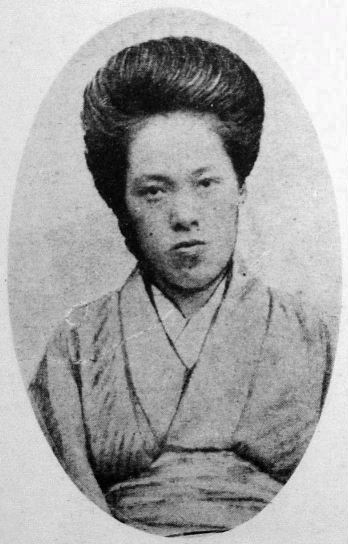1.Our Theme for This Week, #RBG
Our topic on the show this week was #RBG: Supreme Court Justice Ruth Bader Ginsburg. Ginsburg became the second female justice to be confirmed to the court after President Bill Clinton appointed her in 1993. At 86, she is currently the oldest justice on the Supreme Court. (* This article was originally published in 2019. Justice Ginsburg passed away in September 2020.)
Ginsburg was born in Brooklyn, New York to Jewish parents. After graduating from Cornell University, she enrolled in Harvard Law School, and later transferred to Columbia Law School, where she got her law degree. Although her academic performance at both schools was exemplary, she encountered difficulty finding employment due to her gender. She eventually began a clerkship at a U.S. District Court. Later, she held teaching positions at Rutgers and Columbia, becoming the first tenured woman at the latter. In the 70s, she co-founded the Women’s Rights Project at the American Civil Liberties Union (ACLU), and argued several gender discrimination cases before the Supreme Court.
In 1980, she was nominated by President Jimmy Carter to a seat on the U.S. Court of Appeals for the District of Columbia Circuit, and in 1993, she was nominated by President Bill Clinton to the Supreme Court. Among the Supreme Court justices, Ginsburg is considered a moderate liberal.
When Sandra Day O’Connor, the first woman appointed to the Supreme Court, stepped down from the court in 2006, Ginsburg found her voice as the only woman on the court. She became an icon for her eloquent, scathing dissents. In recent years, a feminist supporter of Ginsburg started “Notorious R.B.G.", a social justice blog that celebrates her accomplishments. (The moniker is a nod to rapper The Notorious B.I.G.) The blog helped establish Ginsburg as a pop icon, spawning T-shirts, mugs, and other merchandise. Ginsburg herself has embraced the nickname.
To learn more about Ginsburg, I recommend checking out the 2019 documentary RBG, as well as the 2018 biopic, On the Basis of Sex.
2.The U.S. Supreme Court and Justice Ginsburg
The U.S. Supreme Court mostly deals with questions of constitutionality, and has the power to review appeals from federal courts of appeal and other lower court rulings regarding federal law and the U.S. Constitution. It is comprised of 9 justices who have lifetime tenure—meaning they remain on the Court until they resign, retire, or die. Justices are often categorized as having conservative, liberal, or moderate philosophies, and the composition of the Court and its rulings can have long-lasting effects on American law.
Currently, the Supreme Court is comprised of five conservative and four liberal justices. (The three female justices all hold liberal philosophies.) The Court has thus shifted to the right, and if Ginsburg were to retire, President Trump would appoint a conservative justice as her replacement—tipping the scales even more toward the right, and delivering a massive blow to liberals. This is why support among liberals for Ginsburg has become so vocal—she stands as a guardian of their ideals. This is also why there were some who tried to pressure Ginsburg into stepping down during the Obama Administration to make way for a new, presumably even more liberal-leaning justice.
This is the backdrop against which more and more states in the south and mid-west are passing abortion bans. Just the other day, Alabama passed the nation’s strictest abortion ban, sparking a wave of outrage. The ban allows no exceptions for rape or incest, and includes a penalty of at least 10, and up to 99 years in prison (kinko-kei) for doctors who perform abortions.
Liberals argue that a woman’s uterus is her own, and that women have the right to abortion, while religious conservatives argue that a fetus is a person, and thus has a right to life. The pro-choice and pro-life debate has been going on for decades now. In 1973, in the landmark Roe v. Wade decision, the U.S. Supreme Court ruled that the U.S. Constitution provides a fundamental “right to privacy" that protects a pregnant woman’s right to choose to have an abortion. In other words, it ruled that the Constitution guarantees a woman’s right to an abortion. When two justices who had supported the decision retired from the Court, Republican President George H. W. Bush appointed two new conservative justices, and it was expected that the Roe v. Wade decision could be overturned. However, in its 1992 Planned Parenthood v. Casey decision, the Supreme Court upheld Roe v. Wade 5-to-4.
Two new conservative justices have been appointed to the Supreme Court under the Trump Administration, and Donald Trump himself has called himself “strongly pro-life". Seizing the opportunity, religious conservatives and pro-life activists are making their move. Although strict bans like the one in Alabama may never go into effect as long as Roe v. Wade is the law of the land, the underlying strategy is to get the Supreme Court to eventually revisit the Roe decision and overturn it. While the Supreme Court may opt not to take up such a politically-charged debate, Ginsburg is known to be a stalwart when it comes to abortion rights (although she has said that she believes Roe v. Wade is a flawed ruling in that it leaves the right to abortion open to attack).
3.Americans Aspire to Superheroes
Of all the tweets we featured on the show showering praise on #RBG, our MC Haruhi-san and co-host Hide-san were most impressed by the pictures of young girls dressed up as Ginsburg. In the U.S., Ginsburg is held in high esteem not only by adults, but by young girls who revere her as superhero.
My daughter had to pick an influential American for her biography project at school tomorrow. She picked Ruth Bader Ginsburg. I couldn't be prouder of her choice! #RBG pic.twitter.com/iHlpqqFsWe
— Robert Hackney (@BobbyHackney) April 2, 2019
These days the superheroes that stand tallest in the American public consciousness may be the Avengers, but the U.S. has a long history of revering historically significant men as heroes and paragons of the American ideal. That goes all the way back to the founding fathers and Uncle Sam himself.
At the same time, there are also female figures that embody the values that serve as pillars in American society. Perhaps most iconic is the Statue of Liberty, which symbolizes American freedom and democracy, and has welcomed immigrants to New York Harbor since the 19th century. Then there’s Lady Justice, blindfolded, and with a set of scales in one hand and sword in the other, whose likeness stands at many courts in the U.S. and around the world. (Lady Liberty is based on Libertas, the Roman goddess of liberty, while Lady Justice is based on Justitia, the Roman goddess of justice.) Consider the ideals embodied by these two female figures, and you start to understand why young girls might look to Ruth Bader Ginsburg as a superhero in a robe—not to mention the frilly collar.
These heroes and goddesses and superheroes play an integral role in American society, representing unwavering ideals that make up for the fact that the history of the United States is short and tumultuous. America does not have an aristocracy or a royal family (in fact, it can be said that America founded to get away from the aristocracies and royals of Europe), and by virtue of being a democracy, political power shifts occur relatively frequently. (That being said, the Kingdom of Hawaii was established by King Kamehameha I.) And in America, religious clashes—such as the aforementioned abortion debate—and racial strife are a part of daily life.
Amid the chaos and instability, the mythology of gods and superheroes transcends human existence, unaffected by trends and fads, serving as a rock in unsure times. And whether you’re pro-choice or pro-life, champions of justice like Superman or Superwoman are symbols we can all get behind (hopefully). While humans err in the face of temptation and are sinful creatures, they can aspire to higher ideals and transcend America’s inherent limitations through superhero worship. Or to put in another way, the fact that superheroes have become omnipresent in American society is perhaps a sign of just how serious and widespread its problems have become.
4.The Evolution of Hollywood and the English Language
The mythology of superheroes is also being reshaped by the growing push for diversity in Hollywood and American society as a whole, as well as by the #MeToo movement.
There’s the 2017 film Wonder Woman, the story of an Amazonian warrior princess from DC Comics, which set numerous box office records and became one of the highest-grossing films of that year.
In 2019, Captain Marvel, which tells the origin story of the Marvel Cinematic Universe’s strongest hero, became the first female-led superhero film to pass the billion-dollar mark.
Female-led superhero films are just one part of a larger trend in recent years of bringing more diverse female-driven stories to the screen. 2016’s Hidden Figures, the story of three female African-American mathematicians who played a key role at NASA in getting astronaut John Glenn into orbit in 1962, in particularly noteworthy.
Another important film is 2018’s The Battle of the Sexes, a fictionalized telling of the 1973 exhibition tennis match between Billie Jean King and Bobby Riggs, which helped spur the public acceptance of women’s tennis.
The aforementioned films on Ruth Bader Ginsburg—RBG and On the Basis of Sex—are also part of this wave of female-driven films.
The changing times are also reflected in the language we use. There used to be male heroes and female heroines, but in recent years both men and women can be “heroes”. This is due to the fact that the term “heroine” implies that a male hero is somehow distinct—heroically speaking—from a female hero.
Similarly, instead of there being male actors and female actresses, people are increasingly referring to both as simply “actors.” Instead of businessmen and businesswomen, you have businesspeople. Instead of craftsmen and craftswomen, you have craftspeople. This trend toward more gender-neutral terms is growing. Of course, the issue is not cut-and-dry; for example, most people would likely agree that the Academy Awards for Best Actor and Best Actress don’t need to be combined into a single category. Nevertheless, it is clear that language evolves as we evolve.
5.Who is the Japanese “Notorious R.B.G."?
On the day of the taping, in between script meetings and rehearsals, discussion among the production staff and cast turned to who in Japan would be a comparable figure to Ruth Bader Ginsburg. Two names that came up were Tsuda Umeko and Yosano Akiko.
As I was researching Yosano Akiko, I came across Hiratsuka Raicho. Yosano was involved as a supporter of Seitosha, an organization founded by Hiratsuka, and also contributed poems to its publication Seito (literally, bluestocking), Japan’s first all-women literary magazine. The two also differed in their views—Hiratsuka argued that society and state needed to protect mothers, while Yosano, who advocated for the full financial independence of women, rejected that idea and did not believe that motherhood had to be at the center of a woman’s identity.
In 1919, Hiratsuka, along with Ichikawa Fusae and other feminist activists of the era, founded Shin Fujin Kyokai (New Japan’s Women’s Association), the first Japanese organization formed specifically for the improvement of the status of women. The organization campaigned for changes in laws that prohibited women from participating in politics, eventually leading to the law being overturned by the Imperial Diet in 1922.
Finally, we cannot forget Doi Takako, who became the first female Lower House Speaker in Japan, and Ueno Chizuko, who recently made headlines with a speech she delivered at the University of Tokyo’s 2019 entrance ceremony, in which she remarked that blatant sexual discrimination is everywhere, the University of Tokyo included.
In terms of being part of the public consciousness, Tsuda Umeko may be the first “notorious" Japanese woman that comes to mind—after all, she will be the face of the new 5,000 yen note, scheduled to be introduced in fiscal 2024. In actuality, Japan has many women worthy of being looked up to as heroes.
6.My Wardrobe for This Episode
Green jacket by Azabu Tailor

White shirt by KASHIYAMA the Smart Tailor

American flag cufflinks by MFYS

Red chinos by Brooks Brothers

Brown chukka boots by Red Wing





















